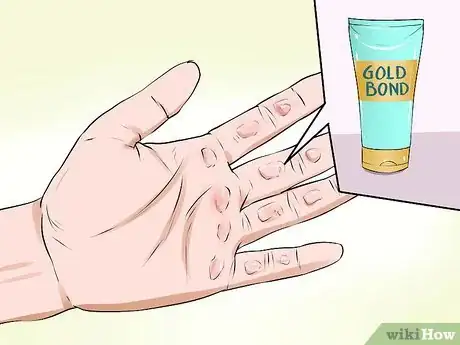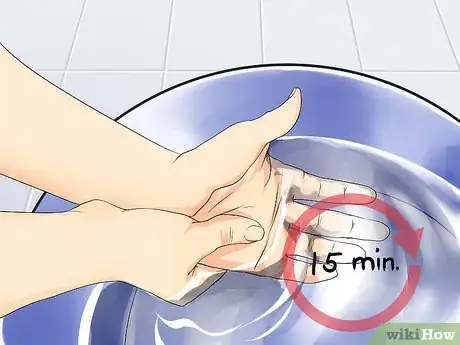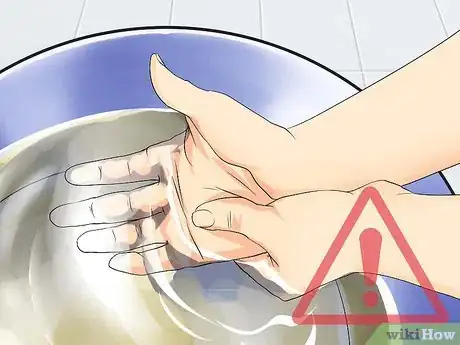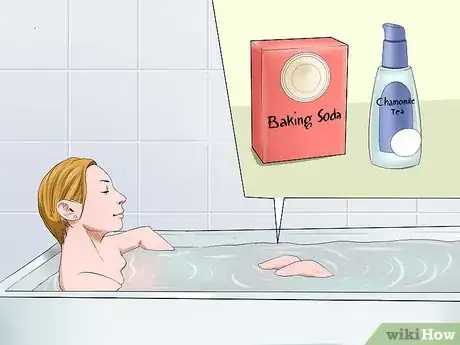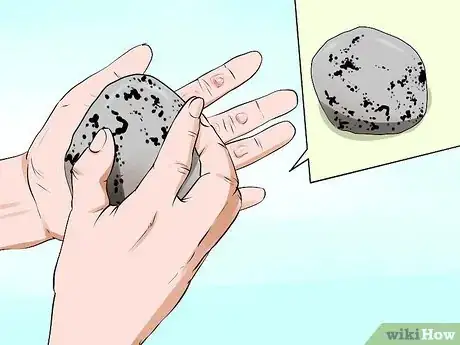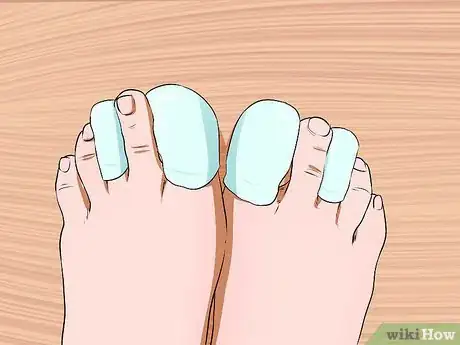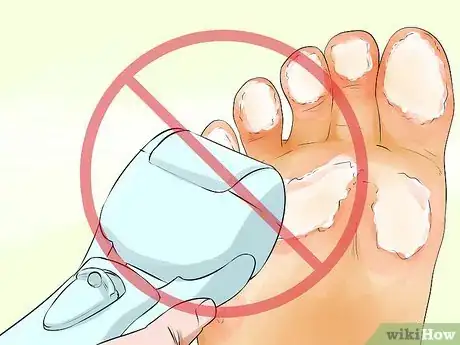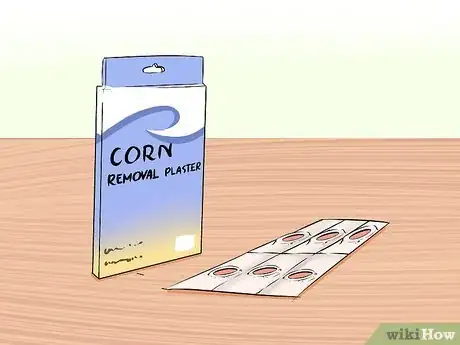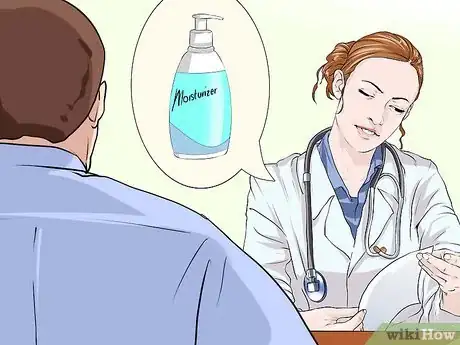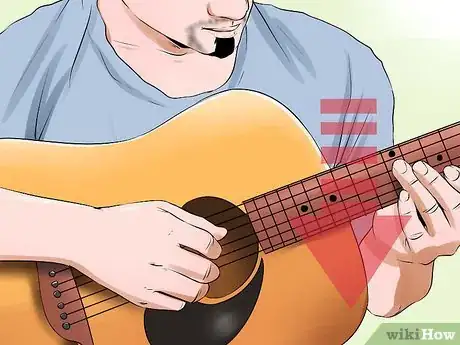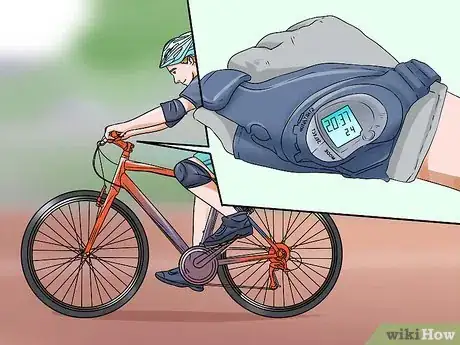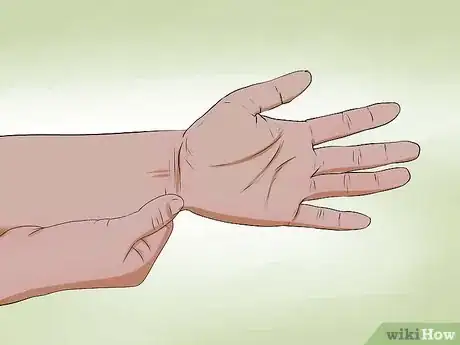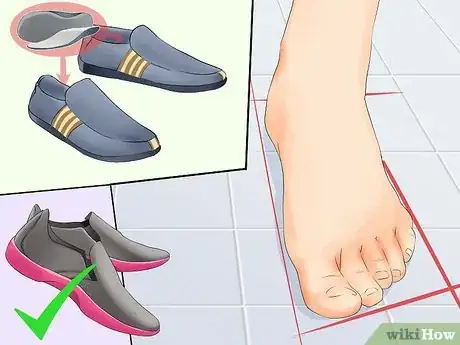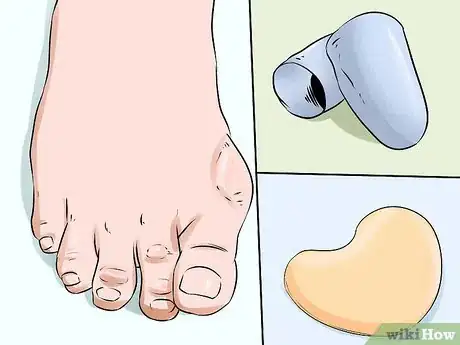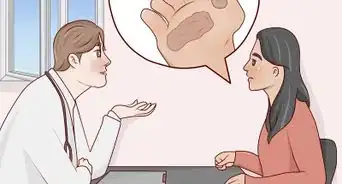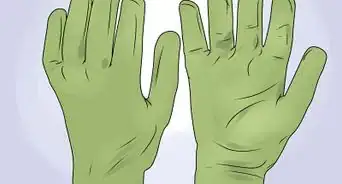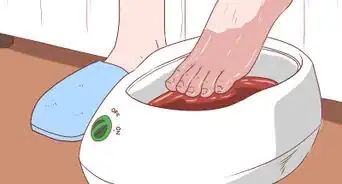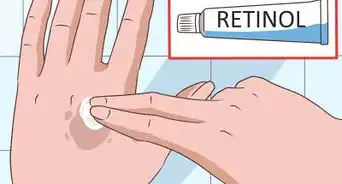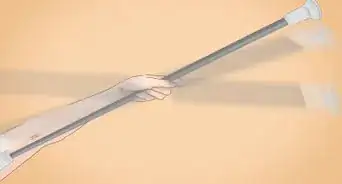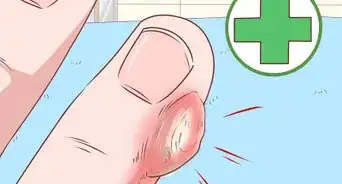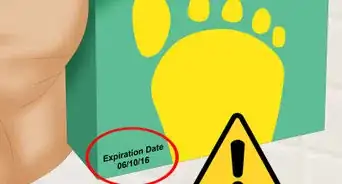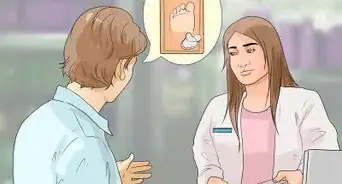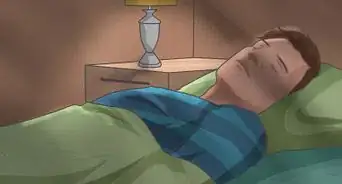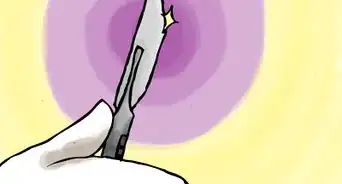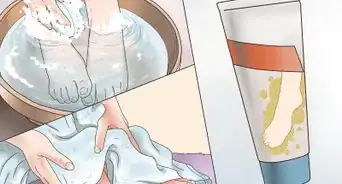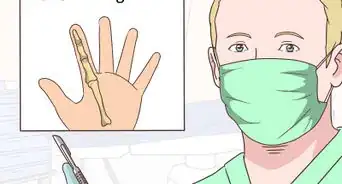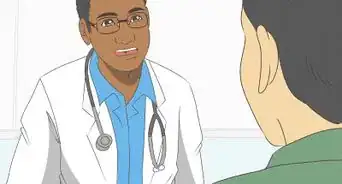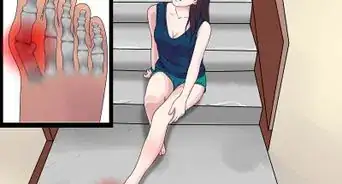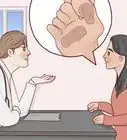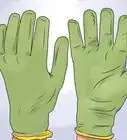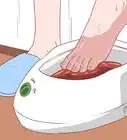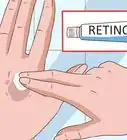This article was medically reviewed by Troy A. Miles, MD. Dr. Miles is an Orthopedic Surgeon specializing in Adult Joint Reconstruction in California. He received his MD from the Albert Einstein College of Medicine in 2010, followed by a residency at the Oregon Health & Science University and fellowship at the University of California, Davis. He is a Diplomat of the American Board of Orthopaedic Surgery and is a member of the American Association of Hip and Knee Surgeons, American Orthopaedic Association, American Association of Orthopaedic Surgery, and the North Pacific Orthopaedic Society.
There are 11 references cited in this article, which can be found at the bottom of the page.
This article has been viewed 26,024 times.
Do you get rough patches of skin on your hands or feet? Are they thick and waxy, maybe cracked and painful? These are calluses. Calluses are layers of skin that the body builds up to protect itself from friction and pressure. You can get them from sports or heavy manual labor or even from your everyday routine.[1] There are ways to limit them, however. These include softening and protecting the skin, treating developing calluses, and reducing general risk factors.
Steps
Protecting and Softening the Skin
-
1Hydrate the affected area. Make sure to moisturize your skin, focusing on the areas that most often get calluses like the hands and feet. Moisturize at least twice a day, perhaps once in the morning and once before bed. The lotion will soften existing calluses and help to prevent more cracking.[2]
- Try a powerful lotion like Gold Bond with shea butter. You can find products like this at any pharmacy for as little as $5.
- Udder cream like “Udderly Smooth” is another option. These creams were designed to prevent chapping on dairy cow udders, but are now sold as super moisturizing lotions. It's perfectly safe for human use, greaseless, and will prevent chapped skin.
- Apply lotion regularly. Well-moisturized hands and feet will be more resistant to new calluses.
-
2Avoid overexposure to water. It seems counter-intuitive, but too much water can actually dry out your hands, leading to cracking and chapping and making them more prone to callusing. Limit the time you spend in the bath and shower, don't over-wash your hands, and avoid hot water.
- Try to keep your time in the water to 15 minutes or less. Salt water will also dry the skin.
- Bathe in warm rather than hot water. Also consider wearing rubber gloves when washing dishes to protect your hands from the hot, soapy water.
- Always moisturize after washing your hands, and pat them dry rather than rubbing them on a towel.
Advertisement -
3Ignore the “urine” rumors. There is a persistent rumor in some sports like baseball that urine therapy, i.e. peeing on your hands, can help to harden the skin and prevent calluses. The idea is championed by former players like Moises Alou and Jorge Posada.[3]
- Human urine may in fact offer some skin protection. It contains urea, an active ingredient in many hand lotions, and will soften instead of hardening the skin.
- Before you experiment with this method, keep in mind that lotion is simply more efficient (and less gross). You'd have to soak your hands in urine for about 15 minutes to get a noticeable effect, for example.[4]
- As for hygiene, recent studies debunk the idea that urine is sterile and show that it may actually contain bacteria.
- In short, while urine therapy may have some benefit, you'd be better to stick with more effective and more hygienic hand lotion.
-
4Soak existing calluses. Soaking your calluses in the bathtub or foot bath in warm water for 20 minutes or so will soften the tissue even further and help you to exfoliate it. The object is to moisten the tissue and prepare the callus, so that you can slough off dead skin cells.
- Fill up the tub or a smaller basin with warm water. It shouldn't be uncomfortably hot, but it should not be tepid either.
- Some home remedies suggest adding baking soda, Epsom salt, chamomile tea, or apple cider vinegar to the bath. The medical benefits of these ingredients are not clear, but they will not harm you.
- Epsom salts are available at many health stores or pharmacies at low cost. You can buy them in small amounts or in bulk.
-
5Exfoliate the thickened skin. Once you have softened the calluses, you can begin to reduce them by exfoliating the thickened skin. With a pumice stone, nail file, washcloth, or emery board, rub the affected area for several minutes. Be gentle. Do not overdo it.
- Do not use a pumice stone if you have diabetes. Doing so can increase your risk of infection.
- Follow up with another application of lotion to moisturize the skin.
- Repeat this procedure as necessary. You can do so once or twice per week until the callus is gone.
-
6Use over-the-counter insoles or toe caps. If you get calluses on your feet, consider buying some common foot care products. These are inexpensive and can be purchased at most any pharmacy, and they will keep your skin softer.[5]
- Feet often get calluses and corns (very like a callus) because they bear a lot of weight and rub against the shoes. Insoles will give your feet added padding.
- Toe caps and toe sleeves fit over individual toes. The idea is to reduce friction on an individual toe and prevent the formation of calluses there.[6]
- Both of these products are be bought for a reasonable price, usually between $10–$20.
- You can also wear thicker socks, apply petroleum jelly to corns and calluses, or pad them with cotton, lamb's wool, or mole skin.
Treating Developing Calluses
-
1Do not attempt to shave the callus. Some people try to cut around calluses with a razor-blade or other implement to remove them. Do not try this. You could get an infection from an unsterile tool or slice deeper than intended, causing bleeding or a serious injury.[7]
- Self-removal of calluses is especially dangerous for people with diabetes, which affects feeling in the extremities. An infection is a serious matter for them and they can risk losing the whole limb.[8]
- Instead, make sure to keep the affected area clean. If your calluses are sore or cracked, wash and dry them and apply antibiotic or antiseptic ointment to ward off infection.
-
2Use a chemical treatment. There are a number of over-the-counter treatments that reduce calluses. Many of these rely on chemicals like salicylic acid, which is also used for warts and softens the top layer of skin so that it can be easily removed. The acid is mild and does not cause pain.[9]
- Salicylic acid products include callus plasters, pads, and liquid drops.
- Chemical treatment will turn the top layer of skin on the callus white. You should then be able to remove or peel off the dead tissue.[10]
- Always follow the instructions for proper usage. Consult with your doctor if you are not sure how or how often to use a chemical treatment.
- Do not use salicylic acid products if you have diabetes or other conditions that affect blood circulation, or if you have cracked skin near the callus. You may be at a higher risk for nerve, tissue, or tendon damage.[11]
-
3Go to a dermatologist or podiatrist. Consider visiting a skin specialist or foot specialist for treatment. Dermatologists and podiatrists have the means to safely remove your calluses without putting you at risk of an infection or injury. The doctor can do this with a sterilized scalpel during a normal office visit. She can also assess any underlying causes of your calluses.[12]
- Your doctor may recommend some of the steps above, like moisturizing, softening calluses, and exfoliation. She may also prescribe acid treatments, shoe inserts, or antibiotics to ward off infection.[13]
- In rare cases, the doctor may find your calluses are caused by a misaligned bone that causes friction. You may need surgery to correct the condition.[14]
Reducing Risk Factors
-
1Try to limit the underlying cause. Calluses are a way that the body protects itself. There is often an underlying cause that leads to calluses on the feet or hands, like, for example, ill-fitting shoes or heavy activity with the hands. Try to discover or limit the underlying issue.
- Calluses on the feet usually come from a problem with shoes or your gait or foot's physical shape. Preventing them will mean looking for sources of friction.
- Do you work with your hands? Are you a gymnast, a gardener, a guitar player, or a construction worker? Chances are that you get calluses because of these activities.
- In both cases, you should be able to take steps to minimize, though probably not eliminate, the thickening of skin.
-
2Protect your hands. If your calluses are caused by an activity — a sport, manual labor, or a hobby — try to find ways to guard your hands and reduce the overall amount of friction involved. This may not eliminate the calluses, but it will limit them.
- For example, baseball players can invest in a pair of batting gloves to limit friction on their hands. Golfers, bicyclists, and gardeners can also wear gloves.
- Athletes like weightlifters and gymnasts need some amount of callusing because of the nature of their sports. However, they should be sure that calluses are kept level to the rest of the hand to avoid tearing them (through filing and exfoliation). In case of a tear, they may be able to wrap their hands in athletic tape.
- Also be sure to use plenty of chalk if you are weightlifter or a gymnast. Chalk will give you a firmer grip. Some Olympic gymnasts even use mixtures of sticky substances with honey, Karo syrup, or sugar. Wash these substances off and moisturize when done.
-
3Take breaks. Your hands and feet need to rest every now and then, both to prevent aches and to prevent calluses. If possible, take breaks or limit stressful activities. Give your body time to heal.
- Rest your hands between bouts of potentially callus-forming activity. Pushing ahead will make the skin more likely to blister and thicken.
- Take it easy on your feet from time to time. Also, avoiding walking too much on hard surfaces, as these put a good deal of stress on your soles.
-
4Get well-fitting shoes. Poor-fitting shoes are one of the biggest causes of calluses on the feet. Shoes should not be too loose or too tight, and should not rub your feet or toes while walking. Your shoes should fit snugly with a small gap between the front and your longest toe.[15]
- Shop for shoes in the afternoon. This is because your feet swell throughout the day. Shoes that fit you well in the afternoon should be comfortable at any time of day.
- Make sure that your shoes are well-padded on the inside. Wear thick socks to absorb impact with the ground, as well.
- Stay away from high-heels and pointed toes. Heels and sharply pointed toes put added pressure on the front of your feet and can lead to callus formation. Avoid them if possible.[16]
- Keep your footwear in good repair. Worn soles can increase uneven forces on your heel bone and chafe your skin, for example.[17]
-
5Get hammertoes and/or bunions treated. Hammertoes and bunions are slight deformations of the feet. Because they stick out, they are more prone to rub against your shoes and to develop calluses. Treat them right, however, and you will limit the amount of calluses you get.[18]
- Both hammertoes and bunions can be padded. Obviously, the best way to do this is by selecting good fitting shoes.
- Try using orthotic inserts, toe sleeves, or moleskin pads around the prominent parts of the deformities, as well.
- In severe cases of bunion or hammertoe, a podiatrist may recommend that you get surgery. In both cases she will operate to realign the bones in your feet, fixing the deformity and, hopefully, the cause of your calluses.
Warnings
- See your doctor if a callus becomes infected.⧼thumbs_response⧽
Things You'll Need
- Water and soap
- Moisturizer
- Gloves, chalk, athletic tape or other protective layers
- Antiseptic or antibiotic ointment
- Lotion
References
- ↑ http://www.mayoclinic.org/diseases-conditions/corns-and-calluses/basics/definition/con-20014462
- ↑ https://www.mayoclinic.org/diseases-conditions/corns-and-calluses/diagnosis-treatment/drc-20355951
- ↑ http://www.slate.com/articles/news_and_politics/explainer/2004/05/why_athletes_pee_on_their_hands.html
- ↑ http://www.slate.com/articles/news_and_politics/explainer/2004/05/why_athletes_pee_on_their_hands.html
- ↑ http://www.nhs.uk/Conditions/CornsandCalluses/Pages/Treatment.aspx
- ↑ http://www.webmd.com/pain-management/toe-cap-and-sleeve-for-corns
- ↑ http://www.mayoclinic.org/diseases-conditions/corns-and-calluses/basics/treatment/con-20014462
- ↑ https://www.mayoclinic.org/diseases-conditions/corns-and-calluses/diagnosis-treatment/drc-20355951
- ↑ http://www.nhs.uk/Conditions/CornsandCalluses/Pages/Treatment.aspx
- ↑ http://patient.info/health/corns-and-calluses
- ↑ http://www.nhs.uk/Conditions/CornsandCalluses/Pages/Treatment.aspx
- ↑ http://www.mayoclinic.org/diseases-conditions/corns-and-calluses/basics/treatment/con-20014462
- ↑ http://www.nhs.uk/Conditions/CornsandCalluses/Pages/Treatment.aspx
- ↑ http://www.mayoclinic.org/diseases-conditions/corns-and-calluses/basics/treatment/con-20014462
- ↑ http://www.nhs.uk/Conditions/CornsandCalluses/Pages/CornsandcallusesPrevention.aspx
- ↑ http://www.webmd.com/skin-problems-and-treatments/understanding-corns-calluses-prevention
- ↑ http://www.webmd.com/skin-problems-and-treatments/understanding-corns-calluses-prevention
- ↑ http://health.clevelandclinic.org/2014/12/7-ways-to-ease-your-bunions-without-surgery/
